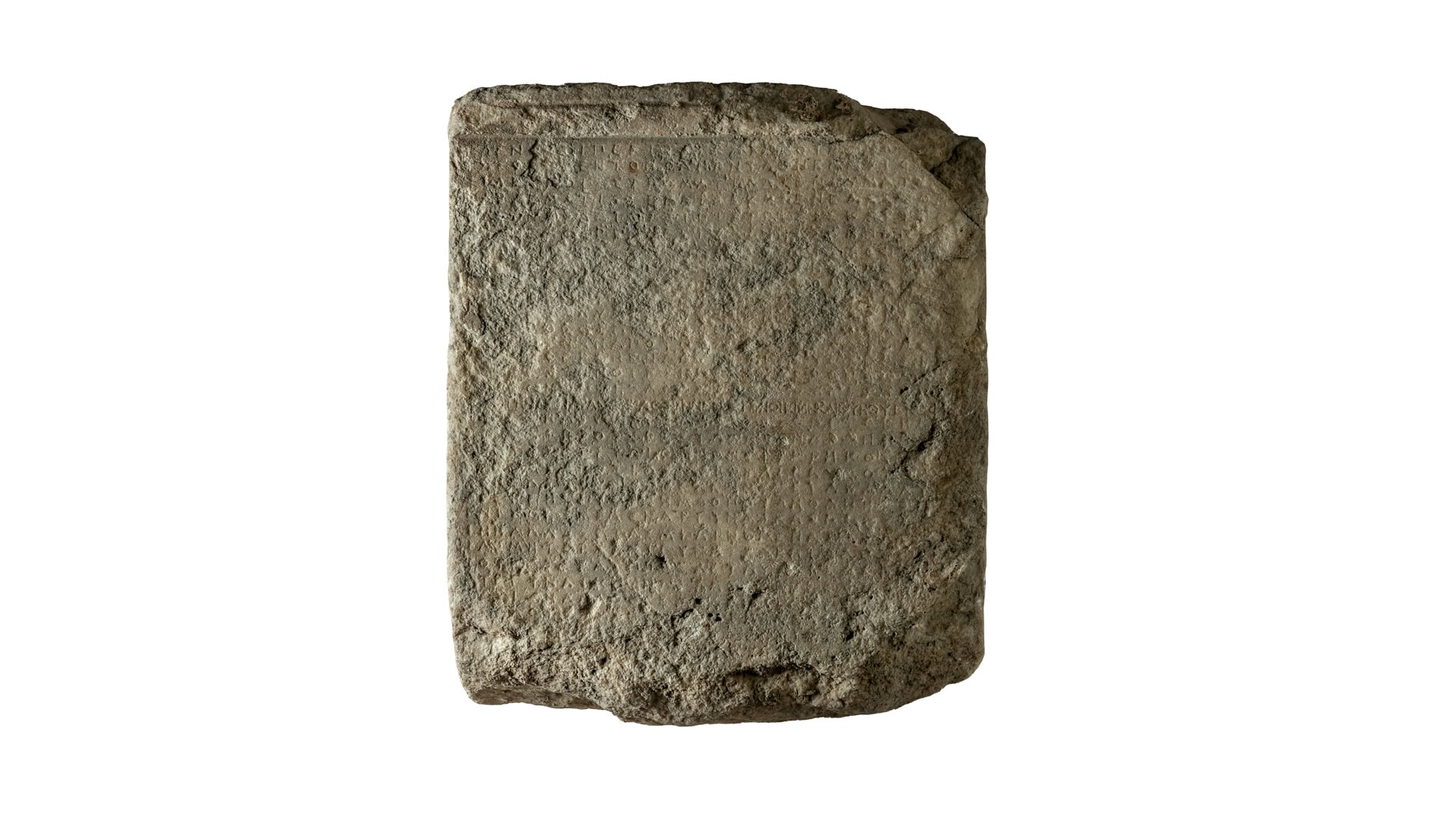Inscribed stele (Sacred Laws from Ioulis on Kea)

In the inscription of the stele from Ioulis on Kea are recorded the regulations by which the burial rituals of the city were governed. This stele constitutes an excellent source offering insights into the burial culture and social norms in ancient Kea and, at the same time, illuminates the role of women in mourning rites. The provisions of the stele refer to details on the way burials should be conducted, the participation of relatives, and actions towards miasma (pollution deriving from impious acts), thereby ensuring that the funerary ritual was properly observed. Of particular significance is the fact that, despite the strict rules, women played a decisive role in the preparation and completion of the burial procedures.
On Side A of the stele, which is better preserved, information is made available about the individual elements of the burial, such as the garments of the deceased, the ekphora bier, the libations of wine, or the sacrifice. A certain amount of money had been specified for all the above, but also restrictions were imposed on the social manifestations of grief. The prohibition against women’s excessive expressions of mourning and lamentation, in particular, reflects the city’s intention to keep public space under control and limit the display of wealth and ostentatious sorrow.
On the other hand, Sides B and C include additional provisions pertaining to the rituals after the burial, such as those performed on the third day following the interment, but also those undertaken annually in honour of the deceased.
In the Sacred Law of Ioulis, the way miasma was dealt with was a central issue of burial practices, laying special emphasis on the purity of women that played a pivotal role in the preparation of the deceased. According to the regulations, the women who participated in the rituals had to adhere to stringent measures: they had to leave the grave site before men, while their presence in the house of the deceased was strictly limited. Only a very small number of the women of the family, who were considered “polluted” due to their close contact with the body of the deceased, were allowed to attend. The participation of other women in the procedure, the deposition of artefacts in the grave, or the performance of the rituals on the thirtieth day were forbidden. Purification from the miasma, which consisted in ritual cleansing with water was necessary to restore the women’s purity and to prevent contamination.
It seems that the legislation on the burial rituals on Kea reflects broader tendencies of the ancient Greek society. These regulations intended to restrain the excessive expression of grief were rigorously observed and were associated with the moral values and the traditions of the time.
The inscription of Ioulis helps us to understand not only the ancient Keans’ social and religious perception of death and funerary procedures, but also the way in which women, as the chief bearers of mourning and ritual, were entrusted with a predetermined role in a domain that tended to ensure social and religious order.
Its significance gains greater prominence in modern times too, as it enables us to identify the ancient concept of death and religious purity, connecting these precepts with the way relevant objects and finds of the past are approached. The rules and practices that give shape to the island’s ritual procedures open a window to the social life of the time, highlighting the contrasts between women and men, the social classes, and institutional expectations.